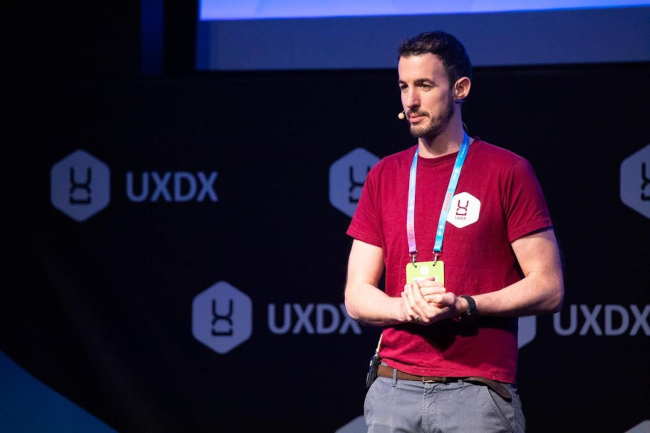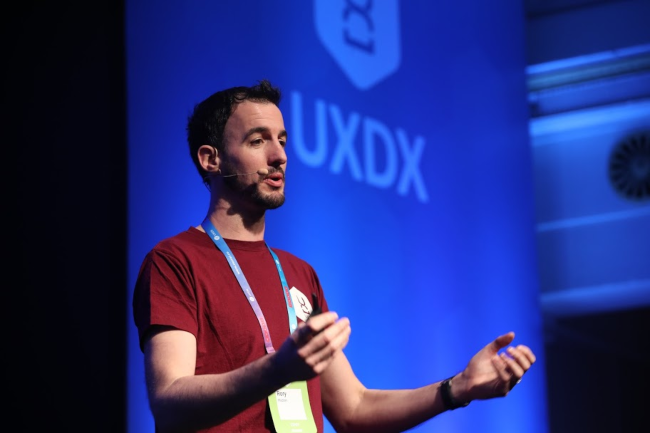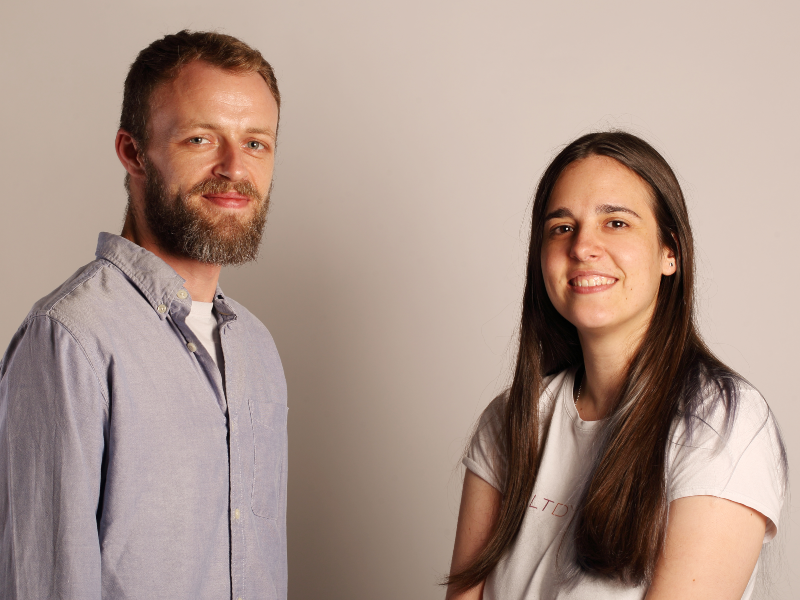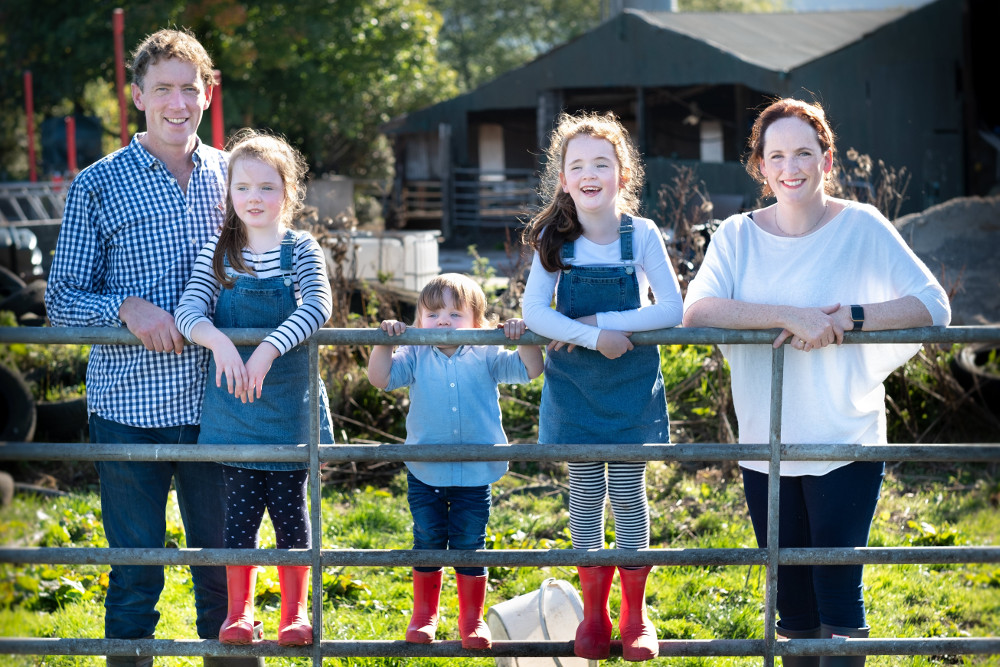UXDX co-founder Rory Madden talks to ThinkBusiness about how the event has gone virtual and has pivoted to bolster digital transformation.
The entire Irish events business has been flattened by the Covid-19 pandemic and only a brave few are pressing ahead albeit as virtual or hybrid events to ensure safety.
Prior to the pandemic UXDX, an annual event focused on the fast-growing user experience (UX) business discipline billed itself as one of the fastest growing events in Europe.
“You can’t build a high-quality product working in silos. So we created UXDX to bring Product, UX, Design and Dev together”
Undeterred and motivated by the importance of this segment of business/product development, UXDX will take place as an entirely virtual event.
The UXDX 2020 on 6 and 9 October will deliver over 35 hours of online content including 40 keynote talks from 36 speakers and panel discussions from global industry leaders, and over 15 workshops.
In addition, UXDX is launching a new and comprehensive Continuous Learning Programme designed to address the 70pc digital transformation tech industry failure rate. The monthly workshops will take place online and will focus on three main categories that drive actions within organisations: People, Processes and Tools.
We talk to UXDX co-founder Rory Madden about the decision to continue as a virtual event and pivot into continuous learning.
Tell us about the origins of UXDX and the industry need it was responding to?

Rory Madden, co-founder, UXDX
UXDX started back in 2016. I had worked for 10 years for large consultancies with blue chip clients following the best practices for software delivery. But on every project these pesky change requests would pop up towards the end of each project. I had very little empathy at the time for the people asking for those changes because we had spent months gathering requirements – how could they have missed these things?
In 2013 I branched out to try my hand at start-up life, basing a lot of the approach on the Competing against Luck, Lean Startup, Lean Analytics and Lean UX books. During this time, I got to see the other side of the fence – trying to specify what needs to be built before you have a product and real customers. And I made the classic mistake of trying to build a bells and whistles product while paying lip service to real user research.
“A lot of companies are starting to make the shift to product teams because software is integral to their business and they are seeing much better responsiveness from this approach, which in turn is delivering better business results”
The results were predictable. I thought I was following the advice in the books, but I relied heavily on my past experience. I set up a second start-up that fared much better, and let me improve on a lot of the practices. It was a lot more successful – actually launching a product with customers, but ultimately it didn’t get the required revenue.
I returned to the corporate world and saw that companies were still making all of the same mistakes that I made previously. The siloed nature of work meant that people never got to see across the fence, like I had been lucky enough to do. And the structures actively avoided trying to improve processes.
My partner Catherine has a background producing conferences to gather and share knowledge, so we decided to work together to try to solve this problem. There are lots of conferences out there that appeal to marketers, designers, developers, product managers but they didn’t address the biggest challenge that I saw – cross functional collaboration.
You can’t build a high-quality product working in silos. So we created UXDX to bring Product, UX, Design and Dev together to, firstly, help people to understand how each role in the team contributes to the end delivery and, secondly, to share real cases studies of companies who are moving to cross functional teams so that the attendees can learn from their mistakes and help speed up their shift from delivering projects to working in autonomous product teams delivering real business and user value.
Is UXDX an established career path now and just how is it being embraced by mainstream businesses?
UXDX isn’t a career path as such, more of a framework. Our mission is to help teams shift from working in projects delivering outputs (which may or may not deliver business value) to working as autonomous product teams delivering business and user value.
A lot of companies are starting to make the shift to product teams because software is integral to their business and they are seeing much better responsiveness from this approach, which in turn is delivering better business results. There are the big digital-native companies who are following this approach – Google, Spotify, Facebook, etc., but increasingly we are seeing more traditional companies shift. The big challenge is that this is no longer an IT initiative, but a cross company initiative.
A lot of other companies are doing digital transformations with a goal of improving the efficiency of the IT department. And there are a lot of efficiency gains to be had. However, companies are now realising that efficiency shouldn’t be the only goal. Digital transformation needs to focus on three core goals: Effectiveness (Build the right product), Efficiency (Build the product right) and Sustainability (Enable consistent delivery over time).
A change of this magnitude is really difficult to implement and needs a combination of top down support, bottom up engagement, iterative and staged implementation and a resilience to small failures along the way. It can be daunting for a lot of companies so seeing case studies of others who have already started the journey is critical.
It can be hard to find the success stories of companies making these changes – but that is exactly what we do. We have speakers featured from some of the digital native companies like Reddit, Github, eBay etc., but we also get speakers from the more traditional companies like Conde Nast, Swedbank, and Verizon, who can share their challenges in changing an existing successful company.
Covid-19 has had a dampening effect on the events industry. However, many are fighting back with virtual/hybrid solutions. Tell us how UXDX is doing it differently?
We practiced what we preach in preparing for our online events. We were due to run events in Stockholm, Copenhagen, Helsinki and Oslo in March and we decided a week out to pivot online. We had no systems or processes in place, so we just ran it on Zoom. And it was great.
We learned so much that helped us to change up the approach for our events in April and beyond. Some examples are little things like the fact that there is no need to organise anything pre-event like you would at a physical conference – because people log in exactly on time. One of the bigger items we learned was that people can happily attend an event for eight hours but aren’t willing to spend 8 hours in front of a screen – it’s much more tiring.
“Our goal is to deliver change so we are going to keep experimenting with our approach to make sure that we get closer to our goal”
One contentious decision within the team was that we decided to build our own platform. We reviewed a lot of the offerings out there, but we felt that they were limited in what they offered. And the lock-in was too much – there are very few products with good APIs (application programming interfaces) that you can just use certain features. The choice was either to lock-in to a particular vendor or build our own. As we keep learning, we are changing our system – what we are building now is very different to what we would have built back in March. But we’re still making assumptions and therefore, we are keeping things as lean as possible. We will learn a huge amount in October and just keep improving from there.
Addressing the tech failure rate is a theme of your event and you have responded with continuous learning? Is it fair to describe that as a business pivot for your organisation and a future beyond the physical events of the past? Indeed, do you see many other events following suit?

Rory Madden, co-founder, UXDX
Conferences are great for inspiration, motivation and networking. These are vital and I think that a conference is the best method for achieving these goals, so we won’t be pivoting away from conferences.
However, when we survey our attendees after a conference, 88pc are motivated to introduce a new change in their organisation that will address the far-too-high tech failure rates in organisations. In chasing up, 84pc of people flag the challenges in implementing change, with budget, time, management support cited as the main blockers.
Within a few weeks, the organisational pushback and deadlines get in the way of people’s best intentions and the initiatives dwindle away. This is what we want to address with the 12-month plan that we are introducing.
The goal is to help keep people motivated, give people more case studies to use to convince the sceptics in the team, to give people the opportunity to ask questions of the experts who have faced similar challenges before and finally, to give people a structure to make implementing changes easier.
I’m not sure if other conferences will follow suit because the goal of a lot of other conferences is to deliver the inspiration, motivation and networking opportunities, which they are delivering. These are really important, so I’m not trying to slight other conferences. Our goal, though, is to deliver change so we are going to keep experimenting with our approach to make sure that we get closer to our goal.
What would you say have been the key learnings for your organisation since lockdown began and how did you respond to the challenges?
Lockdown has presented two big challenges – firstly, as an events company not being able to gather people together is an existential threat. We’ve covered a lot of what we have done to address that above. In some ways it has accelerated plans that we had in place but at the expense of other things that we really wanted to do this year, like get started on our training courses. What the pandemic has highlighted is that teams who have embraced smaller cross functional teams perform better because they have less alignment challenges, so it has reinforced the need to shift for many companies. So, I think the future looks bright.
Secondly, as a team we have been hit with the same challenges as other companies. We are all working remotely so we need to figure out how to address the challenges that this presents. We’ve been having a similar journey to a lot of other teams it seems – initially we were all happy that we could skip the commute, and there was a feeling of increased productivity due to less distractions. Then we started to notice the cracks – alignment was harder, motivation was waning for some people, home distractions increased.
I read an interesting article that described a paradox – people were saying they were more productive in lockdown but managers were saying teams were less productive. This aligns with my experience from companies pre-lockdown as well. Individual contributors value uninterrupted time to focus and complete their tasks. But this is the trap of doing things efficiently, when maybe they should not be done at all. When you try to piece these individual pieces together there might be issues.
How we tackled this was to invest more time in alignment – we have weekly all-hands to review our OKRs (Objectives, Key Results) and we have daily catch ups to discuss what we are working on that day. We used to do these things on slack but changed to video calls because the team agreed that it was great to start the day seeing everyone. We also introduced a weekly improvement call where we talk about what we can do to improve things when working remotely – better seats and periodic team catch ups, safely, are some of the ideas we implemented. And then we finish every week with a table quiz and a chat to try and build rapport in the team.
I think we may well end up with a hybrid model after the pandemic passes where people divide up time between the office and home, or shared office spaces closer to home for people who want a separate space outside their home but not the full commute to an office.
Written by John Kennedy (john.kennedy3@boi.com)
Published: 28 August, 2020






